Heaton Hall
& Park An article in a 1984
edition of the magazine, “The Antique Collector”, said
this about Heaton Hall (seen above), “The
gently rising country to the north of Manchester is
the setting of Heaton Hall, the historic seat of the
Egerton family and the early architectural masterpiece
of James Wyatt.” The house and
surrounding estate came into the possession of the
Egertons by marriage in 1684.
  In 1772 Sir Thomas Egerton employed the fashionable architect and rival of Robert Adam, James Wyatt to rebuild the existing house. It is Wyatt’s creation that can be seen in the image at the top of the page and below.    Wyatt was responsible for a number of significant commissions around the country. The Radcliffe Observatory in Oxford is one of his creations completed in 1773, around the time he was working on Heaton Hall. 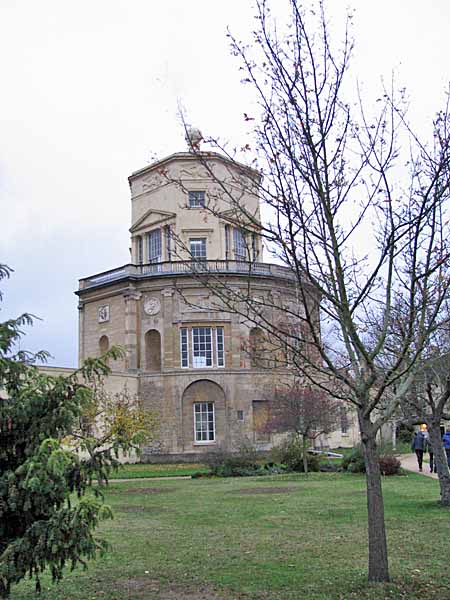 Above and below - images of James Wyatt's Radcliffe Observatory in Oxford.  Pevsner says that, “Sir Thomas had inherited a plain mid-C18 house of brick, of three storeys and seven bays....Wyatt made the three storeys into two, added the pediment, rendered it, and fronted it with a portico of four columns with Adamish capitals and a straight entablature.... James Wyatt built an entirely new range attached to the south side of the c18 house.”  Sir Thomas employed William Eames to landscape the grounds. Eames was an admirer of Capability Brown. In the early 19th century Eames’s pupil John Webb made changes to the original design and it was at this time that a 4 mile long wall was built to enclose the park.  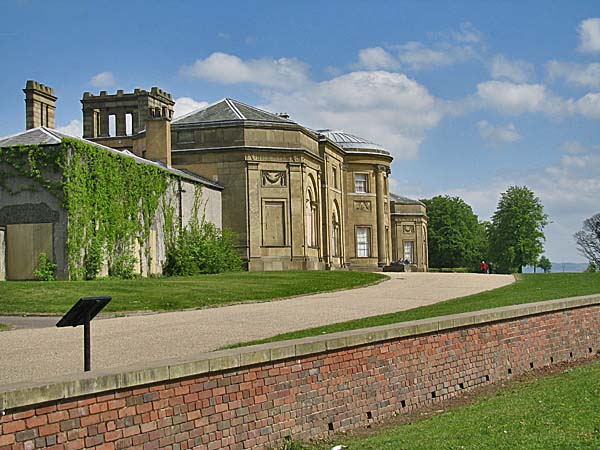 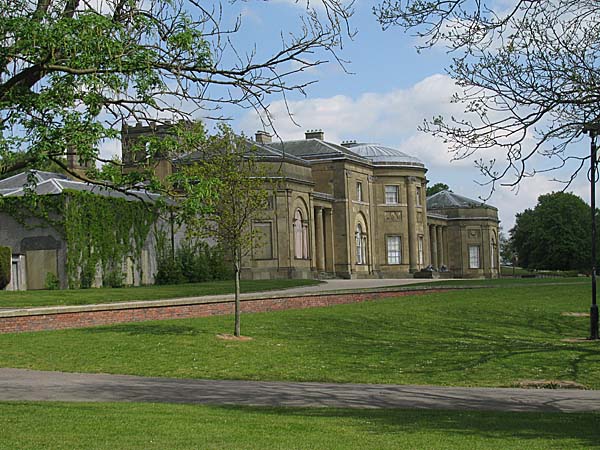 Heaton Hall remained in the possession of the Egertons until 1902 when it was purchased by Manchester Corporation for £230,000. It appears that the Corporations motive in the purchase was acquisition of the 650 acre park.  Little interest was shown in the house itself and the contents of the house were sold off in sales in 1902 and 1906. A large gravity feed reservoir was built in the northwest corner of the park. Construction began before the First World War and was completed in 1920. The salon in the house was used as a cafe and the city art gallery used other room as a branch art gallery but it wasn’t until later that the architectural importance of the house was realized. In 1952 it was designated as a Grade 1 Listed building. However the west wing of the building burnt out in a fire in 1983. When Pevsner visited the house it was in a state of neglect and decay. Since then a Lottery Funded restoration process has resulted in the restoration of the park and four of the buildings designed by Wyatt. Today Heaton Park is listed Grade 2 on the English Heritage Register of Parks and it contains nine listed structures. An article in the “North and East Manchester Advertiser”, dated March 11, 2005, that was headed, “Park is set to show off its major £10M restoration”, says this about the restoration, “Before the project started, Heaton Hall was virtually hidden from view by trees and shrubs and the original William Eames' planting scheme had been lost. Eames was a follower of Capability Brown and the landscape was designed to show off the hall and the views to Manchester and the Pennines. That historic landscape has now been restored together with the Western Pleasure Ground, which has new paths, flowerbeds and seating, where some of the oldest trees in the park can be seen ....... As well as the new visitor facilities, the park's two historic lodges, Grand Lodge and Smithy Lodge have been completely refurbished.” *****************
Today the park offers
visitors a number of attractions.

The Tram Museum
 The Heaton Park Tramway and Museum opened in 1980 following the restoration of a single decker tram that had been used as a summerhouse since its withdrawal from service in the 1930s. Today a number of trams are used on Sundays and Bank Holidays to give rides to visitors.  The Old Town Hall
Colonnade
 Among the interesting structures in the park is this colonnade. It once graced the front of the Manchester Town Hall building on King Street.   When that building was scheduled for demolition a campaign was mounted to save the facade. That campaign was successful and the colonnade was re-assembled here in Heaton Park. The Boating Lake
 The 12 acre
boating lake was constructed between 1908 and 1912
and was dug by hundreds of previously unemployed
men using only shovels and small hand-pulled
trucks to dispose of soil around the park.
  The Papal Monument
 During his visit
to the UK in 1982, Pope John Paul II held an
outdoor mass in Heaton Park and a large granite
stone has been placed on a hill overlooking the
site of the mass.
 The Pleasure Grounds & Dell Gardens    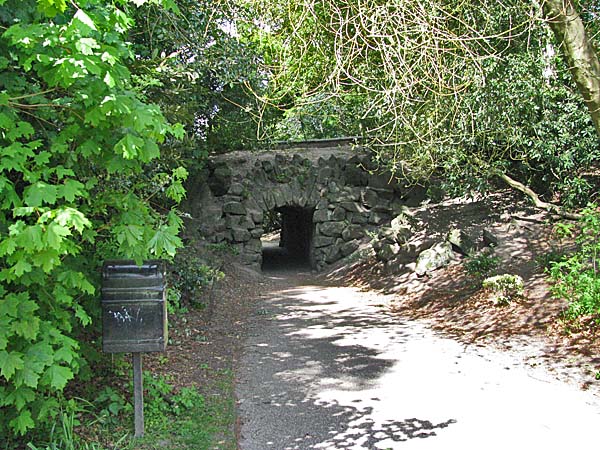  The Animal Centre  The Stables   The park features
one of the oldest golf clubs in the Manchester
area and in 2005 it was voted the best municipal
course in England.
Heaton Park has also been the venue for many outdoor events including rock concerts . In 2009 the Manchester band Oasis gave three concerts on consecutive nights to a collective crowd of 210,000. ****************************
More images from May of 2011     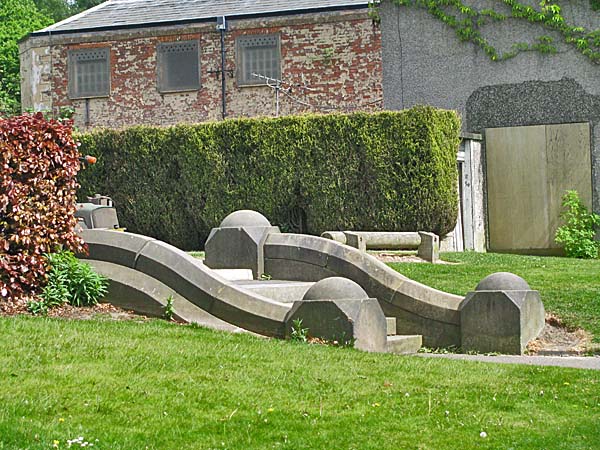  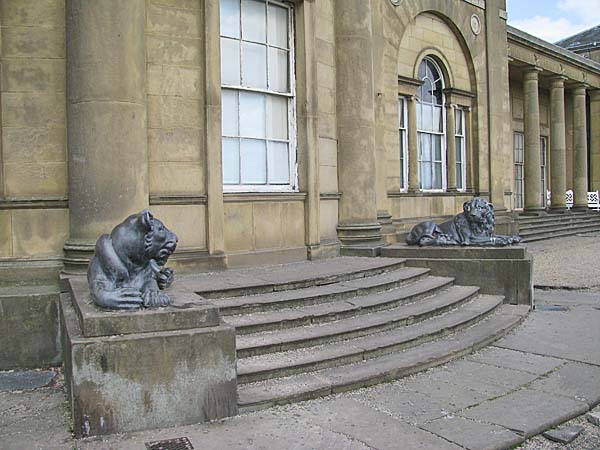  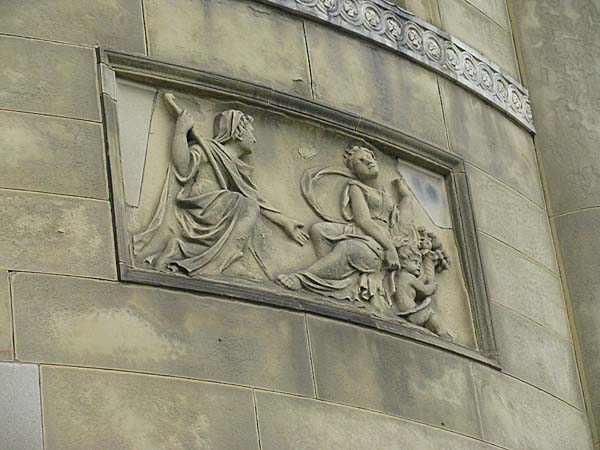 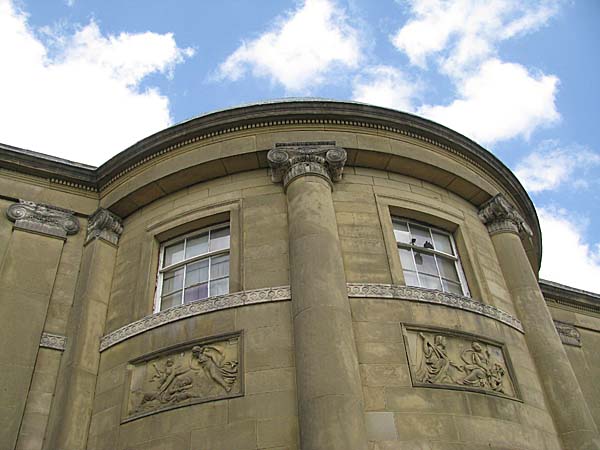     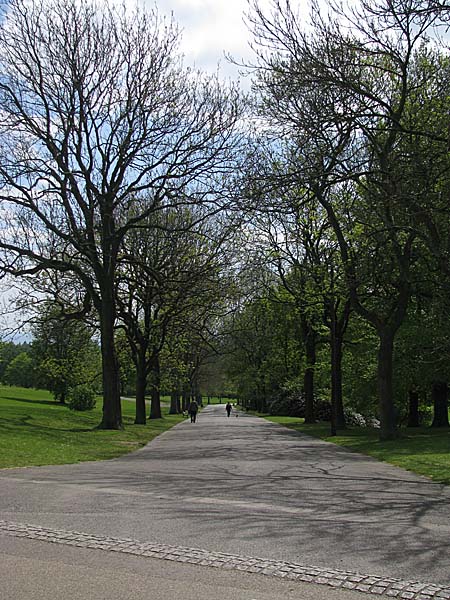 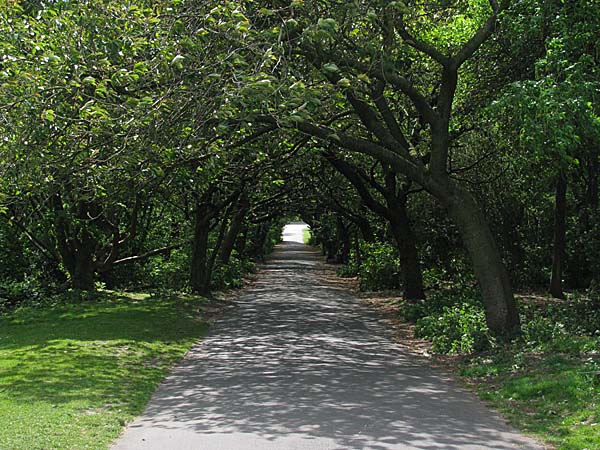 NOTE: Some of
the images on this page are shown here with the
permission of David
Dixon
|